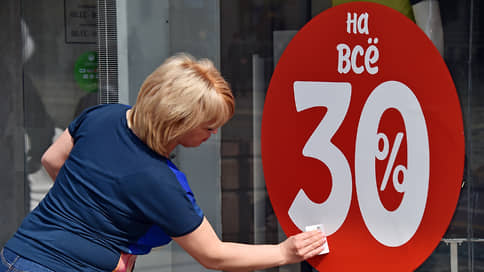Competition intensifies in trade and services
[ad_1]

Data on the state of competition in the Russian market, obtained from small and medium-sized companies, indicate an increase in business activity in trade and services; in manufacturing, it is still not possible to restore competition after the departure of foreign companies. As a study by Opora Rossii showed, 60% of small and medium-sized businesses note increased competition in 2023, but competitors continue to get smaller – less than a third of enterprises see them in large businesses, more than a third see competitors in other SMEs, and increasingly as competitors for small companies They also become self-employed.
The state of competition in the Russian market is gradually recovering after the departure of foreign companies: if at the end of 2022, 51.3% of entrepreneurs reported increased competition, then at the end of 2023 – 60% (pre-Covid level – 59.1%). This data is provided by Opora Rossii in monitoring the state of competition based on a survey of 713 small and medium-sized entrepreneurs (legal entities, individual entrepreneurs, self-employed).
Assessments of competition as “very” or “quite strong” remained unchanged over the year – a total of 55%. 40% of respondents called competition moderate. Representatives of the education, consulting and trade sectors spoke more often about increased competition, while representatives from the manufacturing sector, real estate and energy sectors spoke about weakening competition. Such results are also related to the consequences of the departure of foreign suppliers and sanctions. Russian companies have been more active in developing trade niches, but developing their own production requires time and financial costs: in addition, the production of Russian analogues of foreign products does not mean the appearance of several competing suppliers on the domestic market.
Executive Director of Opora Russia Andrey Shubin points out that activity in trade is also supported by the development of online trading and marketplaces. “Consulting also began to develop due to the departure of the largest international consulting companies, as well as incentives to hire companies with a Russian passport for auditing or providing such services. Manufacturing is a more expensive business, it requires large investments, equipment costs, and more qualified personnel, which are now difficult to find,” he says.
Data on the main competitors of SMEs also confirms these trends: while until 2022 large and medium-sized entrepreneurs were considered the main competitors of SMEs, SMEs are now increasingly seeing increased competition within the sector. Thus, 31% of respondents consider large businesses to be the main competitor, 36% – small and medium-sized ones. In addition, competition from the self-employed has increased (according to 11% of respondents versus 8.9% in 2023). Let us remind you that the number of payers of professional income tax is growing – by the end of the first quarter of 2024 it reached 10 million.
According to entrepreneurs, the state of the competitive environment has improved over the past year – this was the answer of 25% of respondents (21.9% a year earlier). At the same time, there were fewer anti-competitive actions on the part of government agencies (28% of respondents versus 25.2%). Despite this, more than half of entrepreneurs consider the conditions for running or opening a new business to be satisfactory or unfavorable. These conditions were assessed positively by 44% and 41% of respondents, respectively. However, last year there were noticeably fewer positive assessments – 34.5% and 31.1%, which can be explained by the shocks of 2022. At the same time, 46% of respondents talk about the presence of barriers to doing business: business is still acutely assessing the problem of high taxes, instability of legislation, loss of suppliers, and loss of personnel is noticeably more common.
[ad_2]
Source link







